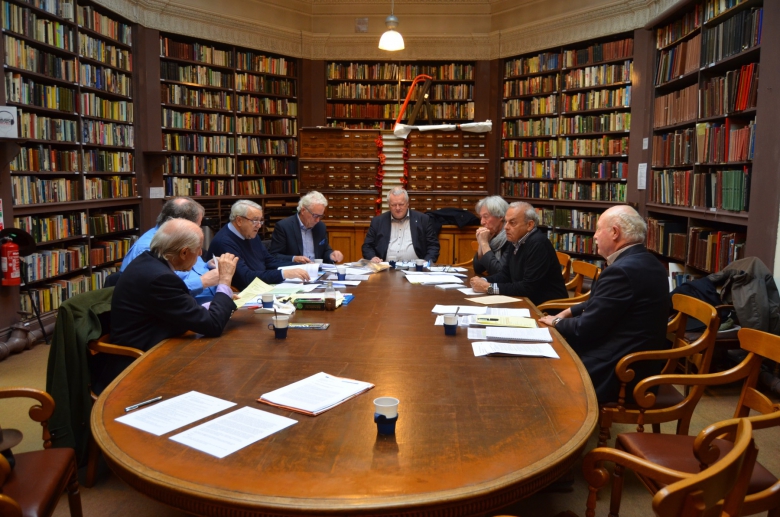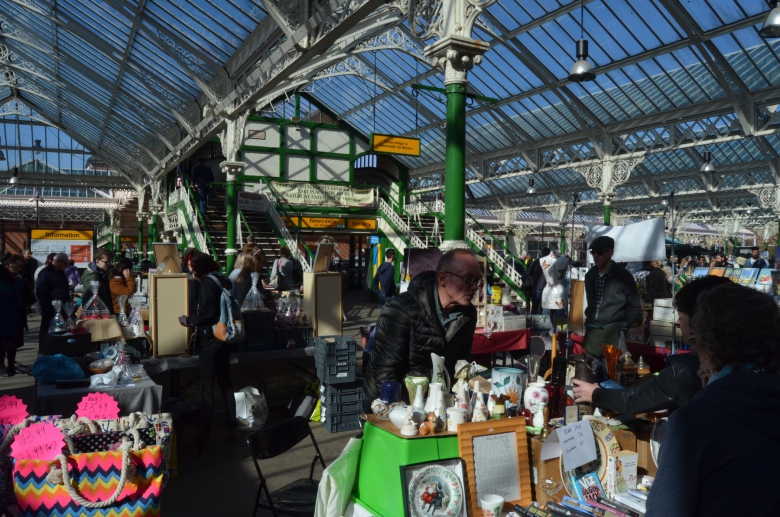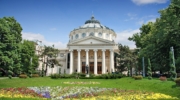EN Industrial and Engineering Heritage Committee met in Newcastle
Europa Nostra’s Industrial and Engineering Heritage Committee (IEHC) held its 17th meeting in Newcastle on 23-26 March 2017. The working visits focused on the themes: adaptive reuse, reconstruction and social context of industry. The gatherings were hosted by IEHC Member Architect Cyril Winskell.
At the formal meeting, held in the monumental Board Room of the Literary & Philosophical Society, members were briefed on the Industrial Heritage Excursion the IEHC traditionally organises during European Heritage Congresses, this time in the Turku area in Finland on 11 May. As for the 7 Most Endangered Programme, Founding Secretary Rienko Wilton informed members on the current activities to save and hopefully ensure responsible redevelopment of the historical Malmi Airport near Helsinki. Rienko Wilton also reported back on the IEHC’s recent input into the European Union Prize for Cultural Heritage / Europa Nostra Award Archives at the Danube University of Krems, Austria. Other topics of discussion were the European Year of Cultural Heritage 2018 and the project for a publication on Europeanness and Industrial Heritage.

The IEHC business meeting in the Newcastle Literary & Philosophical Society. From left to right: Chairman Pierre Laconte, Peter Ovenstone, David Morgan, Piotr Gerber, Hildebrand de Boer, Paul Smith, Eusebi Casanelles and Rienko Wilton. Photo: Cyril Winskell.
Working visits took members to the Beamish Open Air Museum, portraying street life in a small city around 1900. In more recent years a Colliery Area and Pit Village were reconstructed in honour of the important industrial history of Newcastle, Yorkshire and Northumberland.
A popular example of adaptive reuse is the outstanding Victorian Tynemouth Railway Station (1882), which extensive surface recalls the period before people were able to fly by plane to the sunny resorts outside the UK, and, for example, spent their holidays on the English North Sea Coast. Since 2012 the wonderful roofed spaces give room to weekly flea-markets, perfectly connected by light-rail with the Newcastle urban area. It was heart-warming to experience the good atmosphere on a sunny Sunday, thanks to a perfectly shaped structure of transport heritage.

Weekly flea-market in the Tynemouth Railway Station. Photo: Hildebrand de Boer.
Among other highly interesting sites, the Committee visited St. George’s Church in Jesmond, designed by T.R. Spence under the patronage and expense of Charles Mitchell, the partner of ship builder and munitions manufacturer Lord Armstrong. The church was consecrated in 1888, with the aim to serve the industrialisation growing population.
Another hidden treasury of social life is the Tyneside Cinema (1937), designed and built as a news cinema by Dixon Scott. After a major restoration by Cyril Winskell, the cinema was re-opened in 2008 with the support of the English Lottery Fund, ERDF, and other trusts, as well as over 700 individual donors.
The urban area of Newcastle contains many highly interesting monuments of “industrial culture” and infrastructure, for instance the seven marvelous Tyne bridges, the Committee visited already in 2012.
The next IEHC meeting is planned to take place in October 2017 in Katowice (Poland), and will be hosted by one of the IEHC’s new Members, Dr. Ir. Piotr Gerber.






